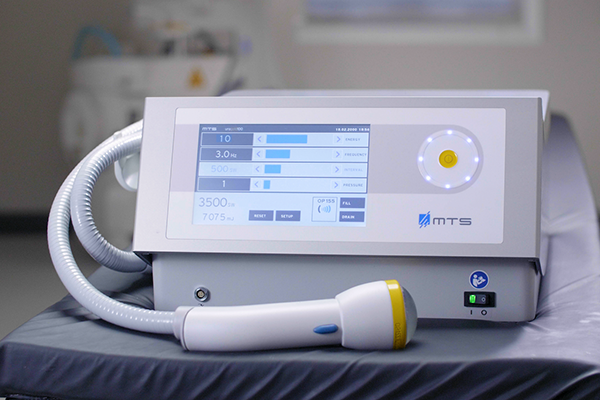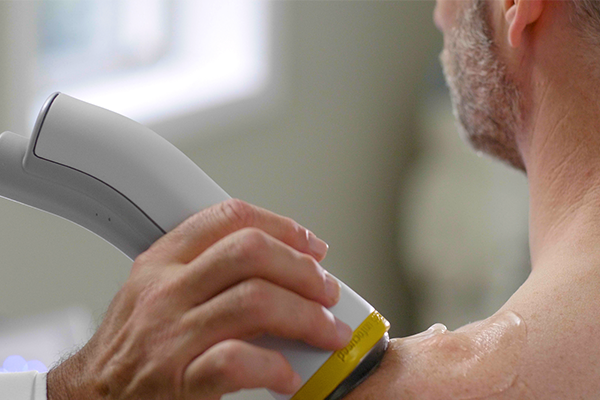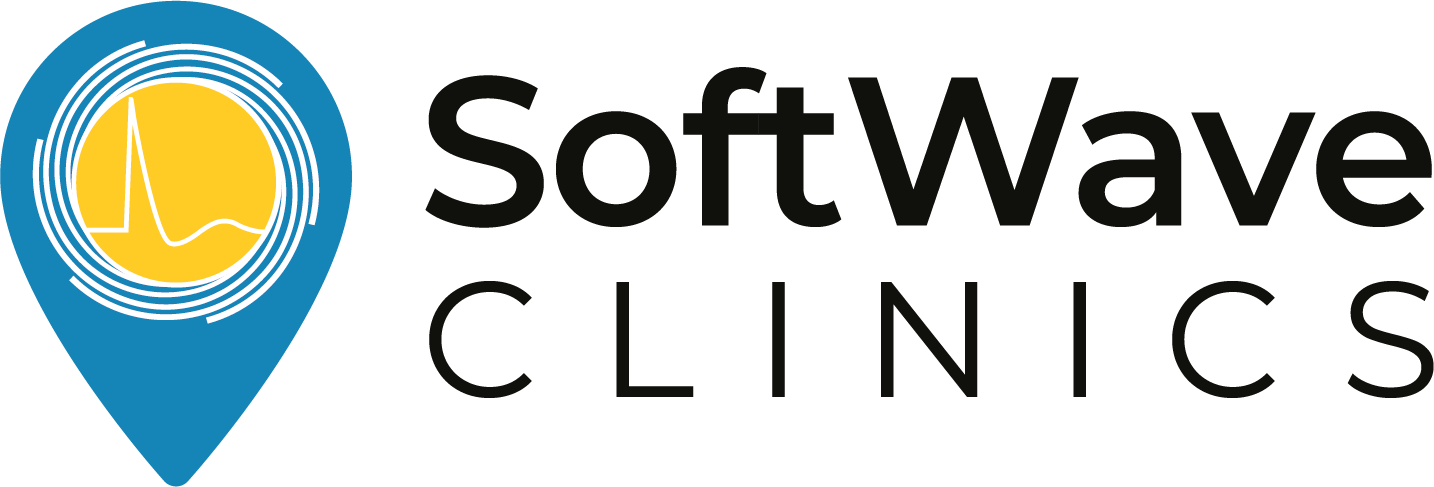Statistics reveal that a substantial number of individuals will endure muscle pain in their lifetime, making it a widespread health concern. Despite the existence of various treatment alternatives, not all yield satisfactory results, often leading sufferers to seek different solutions for their pain. Current research indicates that shockwave therapy may be a potent approach to managing muscle pain without the hefty expenses or side effects linked to surgery and prescription drugs.
In this article, we’ll delve into:
- Root Causes of Muscle Pain
- Advantages of Shockwave Therapy for Muscle Pain
- Shockwave Therapy Mechanism
- Understanding a Shockwave
- How does Shockwave Therapy Alleviate Muscle Pain?
- Varieties of Shockwave Therapy
- Ideal Candidates for Shockwave Therapy
- The Shockwave Therapy Protocol
- Possible Side Effects of Shockwave Therapy
- The Best Shockwave Therapy for Muscle Pain
Root Causes of Muscle Pain

Muscle pain can stem from numerous factors, from poor workout practices to underlying health conditions. Below are some common reasons for muscle pain:
- Muscle strain: Overuse, incorrect exercise techniques, or abrupt actions can lead to muscle strains, resulting in discomfort.
- Sports injuries: Various sports and physical activities can cause muscle injuries, leading to pain.
- Chronic medical conditions: Diseases like fibromyalgia or arthritis can result in continual muscle pain.
- Repetitive stress injuries: Regular and repetitive actions can result in muscle injury and ensuing pain.
- Dehydration and imbalances: Insufficient hydration or electrolyte imbalances can cause muscle cramps and pain.
It’s important to note that these are just some of the most common causes of muscle pain. If you are experiencing muscle pain, you can learn if your condition is suitable for treatment and try shockwave therapy with our New Patient Special.
Considering Shockwave Therapy?
Try SoftWave Therapy for just $69. Non-invasive healing that reaches deeper.

Advantages of Shockwave Therapy for Muscle Pain
In terms of alleviating muscle pain, shockwave therapy is an emerging non-invasive option offering a plethora of benefits. This treatment uses high-intensity shock waves to initiate healing in the affected region. Here are some merits of employing shockwave therapy for muscle pain:
Enhanced Healing
Shockwave therapy uses high-frequency sound waves to instigate the body’s inherent healing process. This accelerates the recovery of injured tissues, including muscles, which can be particularly beneficial for chronic or recurring muscle pain.
Decreased Dependence on Medication
Traditional treatments for muscle pain often involve drugs, which can carry unwanted side effects. Shockwave therapy, a drug-free alternative, can lessen the need for pain medication or other therapies, appealing to those who prefer non-pharmaceutical treatments.
Better Quality of Life
Muscle pain can drastically impact one’s quality of life, hindering everyday tasks or favorite hobbies. Shockwave therapy can diminish pain and enhance mobility, allowing patients to resume their regular activities, improving their quality of life.
Non-Invasive and Safe
Contrary to many muscle pain treatments, shockwave therapy is non-invasive and safe. It does not necessitate incisions or anesthesia and carries a low risk of complications, making it a desirable option for those wanting to avoid more invasive treatments.
In summary, shockwave therapy is a promising treatment for those struggling with muscle pain.
Shockwave Therapy Mechanism
Shockwave therapy is a non-invasive treatment that employs high-energy acoustic waves to stimulate the body’s natural healing process. Let’s see how it functions:
Understanding a Shockwave
Shock waves are fast acoustic pulses consisting of a high-pressure surge succeeded by a comparatively lower-pressure trough. These phenomena occur in our daily lives and are produced by various sources like supersonic aircraft, explosions, lightning, earthquakes, or any other event leading to a change in air pressure.
How does Shockwave Therapy Alleviate Muscle Pain?
A device is used to create and safely deliver shockwaves to the affected muscle area. These shockwaves can encourage healing at the cellular level, improve blood supply, and trigger the body’s natural healing process.
Varieties of Shockwave Therapy
While there are numerous types of shockwave therapy, the three most common are radial shockwave therapy (RSWT), focused shockwave therapy (FSWT), and acoustic wave therapy (AWT).
Radial Shockwave Therapy uses a handheld device that delivers pressure waves to the skin’s surface. This shockwave therapy type is widely used for treating conditions like plantar fasciitis, Achilles tendinopathy, and tennis elbow. However, it might not be effective for deeper tissue injuries, and patients may need multiple treatment sessions.
Focused Shockwave Therapy uses a device that delivers high-intensity shockwaves directly to the affected area. This shockwave therapy type is frequently used for treating chronic conditions like plantar fasciitis and slow-healing bone fractures. However, it may be uncomfortable for some patients, and treatment intensity might need to be adjusted based on individual needs.
Acoustic Wave Therapy uses a device that delivers low-intensity shockwaves to the affected area. This shockwave therapy type is typically used to improve blood flow, lessen pain and inflammation, and promote tissue healing. It is often used to treat conditions such as erectile dysfunction and cellulite. However, the low-intensity shockwaves may not be effective for treating some conditions.
broad-focused Shockwave Therapy delivers high-intensity shockwaves that penetrate a broader and deeper tissue area than focused shockwaves or radial waves. SoftWave is the only widely available broad-focused shockwave treatment in the US. broad-focused shockwaves can treat the same conditions as traditional focused shockwave therapy, while providing superior relief for large muscle issues. broad-focused shockwaves may also require fewer sessions compared to radial or focused shockwave treatments.
Ideal Candidates for Shockwave Therapy

Certain factors make a patient a suitable candidate for shockwave therapy, such as:
- Individuals with chronic muscle pain
- Patients who haven’t experienced success with other therapies
- Patients favoring non-invasive treatment options
Individuals with chronic muscle pain might find shockwave therapy to be a practical treatment option. This includes conditions like fibromyalgia and arthritis. In cases where traditional treatments like medication and physiotherapy fail to provide significant relief, shockwave therapy may offer a promising alternative.
Also, individuals who’ve tried multiple conservative treatment options without achieving sufficient pain relief might benefit from shockwave therapy for muscle pain.
For patients preferring non-invasive treatments, shockwave therapy offers a non-surgical approach that does not require incisions or anesthesia. This can make it an attractive treatment option for those wishing to avoid more invasive procedures such as surgery.
The Shockwave Therapy Protocol
Grasping the steps involved in shockwave therapy is important for patients contemplating this solution for their muscle pain. In this segment, we’ll break down the process of shockwave therapy:
- Initial Steps: Before the treatment begins, an ultrasound gel is placed on the area of muscle pain. The shockwave equipment is then gently arranged on the skin.
- Procedure Phase: Patients will notice a soft tapping or throbbing sensation as shockwaves are released to the pain area. There may be minor pain or unease, but anesthetics or pain relievers are usually not needed. Continuous conversation between the patient and the practitioner can assist in identifying treatment points and observing improvement.
- Aftercare: After the 10-15 minute session, patients can usually get back to their routine activities, without requiring any recovery period. Some practitioners might advise against activities or exercises with high impact for a day or two following the procedure.
Possible Side Effects of Shockwave Therapy
Shockwave therapy is typically considered safe and is well-received, with minimal side effects. However, as with any medical treatment, there are slight risks of side effects. Some common side effects reported from shockwave therapy for muscle pain are:
- Discomfort or pain during or after the session
- Inflammation or bruising
- Redness or irritation on the skin
- A sensation of numbness or tingling
It’s important to remember that these side effects are usually mild and temporary. Most patients can get back to their daily activities soon after the treatment.
FDA-approved SoftWave provides a secure and effective shockwave therapy for muscle pain. Side effects from SoftWave are minimal and do not limit your activities. It does not lead to bruising or inflammation, and any minor redness or soreness usually fades away within a day or two.
The Best Shockwave Therapy for Muscle Pain
Are you looking for safe, reliable, and effective relief from muscle pain?
SoftWave therapy is FDA-cleared, patented, and nationally recognized for its leading tissue regeneration technology. Unlike other types of high-energy shockwave treatments, SoftWave is the only shockwave therapy on the market that uses true broad-focused shock waves that treat larger and deeper areas of tissue.
Thousands of patient’s have experienced the benefits of SoftWave for muscle pain, including:
- Little to no side effects
- Short treatment time
- Quick recovery
- Long-lasting results
Find a SoftWave Therapy provider near you or learn more about SoftWave and whether or not you’re eligible for full treatment today!
New Patient Special
Try SoftWave for just $69 at a clinic near you and learn if you’re a candidate for full treatment




